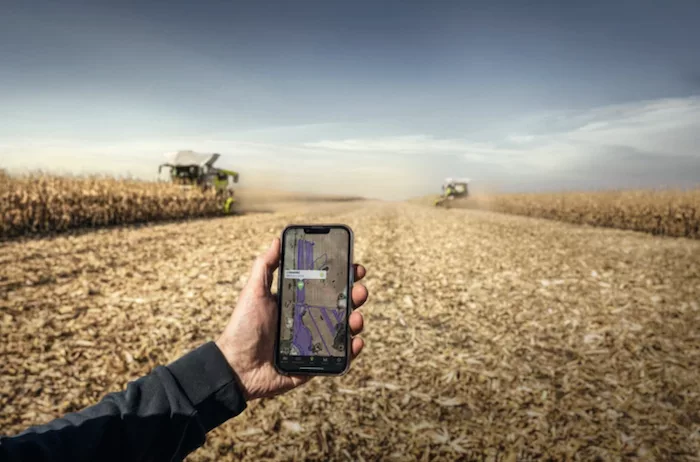From auto-guidance, section control, variable rate and precision irrigation, there exists a myriad of precision agriculture technologies that can help capture efficiency on-farm. Exponentially, those efficiencies grow into environmental benefits in reducing overlaps with equipment, decreasing water and input use, limiting fuel costs and reducing operator stress.
Association of Equipment Manufacturers (AEM) recently studied the environmental benefits of precision agriculture, putting to the test technology that enables precision agriculture, including remote sensing, GPS tracking, yield monitors, weather stations and field prescriptions. The study found both direct and indirect benefits when precision agriculture technology was used on areas such as productivity, water use, inputs use and fossil fuel use.
As a member of AEM’s Ag Tech Leadership Group and Precision Farming & Systems Engineer with CLAAS, Seth Zentner’s job is to promote smart farming technologies and work to remove barriers that farmers face in implementation.
“Every product we develop, we have the farmers in mind,” Zentner says. “We work hard to design new tools that not only help solve issues farmers are currently facing but help make their operation as efficient as it can be in the ever-changing agriculture landscape.”

Photo courtesy of CLAAS
“More time is not something we can give to farmers, so it’s our job to give them machines and tools that they can use to make the most of their time,” he adds.
Zentner shares the following tips to optimize smart farming on your operation for maximum efficiency gains:
-
Begin With the End in Mind
“Always start with a goal you want to achieve and try to find a technology or farming practice to achieve it,” Zentner says. “That way you have a benchmark to know if the newly adopted technology or practice is really benefiting you or not.”
Those benefits might not have immediate turnaround, so Zentner says to be patient. He also recommends tweaking to ensure you are finding the optimal benefit for your unique operation and agronomic practices.
-
Allow Tech to Open New Doors
“It’s been well-proven that technologies like autosteer and section control reduce operator fatigue, but semi-autonomous technologies such as our CEMOS Automatic system allow less-experienced operators to run our combines at maximum efficiency with little direction,” he says.
With these technologies, it could be possible to grow your fleet of equipment operators beyond the core crew, which could impact the legacy of your farm or operation.
“The integration of technology in agriculture has helped hold the interest of the next generation of on-farm workers and attracts talent from areas outside of ag,” Zentner says.
-
Watch for Emerging Tech Trends to Hone Data Capture and Analysis
Zentner sees increasing potential in agriculture technology and says he is watching trends in remote monitoring, data analytics and machine automation. Using this technology, he says, can help analyze years of data to create operational efficiency, like knowing what inputs to use, when to apply them and at what rate.
-
Understand Your Equipment’s Full Capabilities
Technology adoption can be a risky investment now as farm margins get tighter, but Zenter says that your equipment might be sitting on advancements that do not require significant investments.
“Your equipment might already be fitted with hardware needed for a feature you’re not currently using and only an unlock fee is required,” he says. “There might also be services or features offered by your equipment manufacture, equipment dealer or ag retailer which you’re not currently taking advantage of and many times these can be free of charge.”
America’s Conservation Ag Movement is a public/private collaborative that meets growers across the country where they are on their conservation journey and empowers their next step with technical assistance from USDA-NRCS and innovation solutions and resources from agriculture’s leading providers. Learn more at americasconservationagmovement.com.



![[Technology Corner] A Big Step Forward for Interoperability & Data Sharing](https://www.precisionfarmingdealer.com/ext/resources/2025/12/12/A-Big-Step-Forward-for-Interoperability--Data-Sharing.webp?height=290&t=1765565632&width=400)


